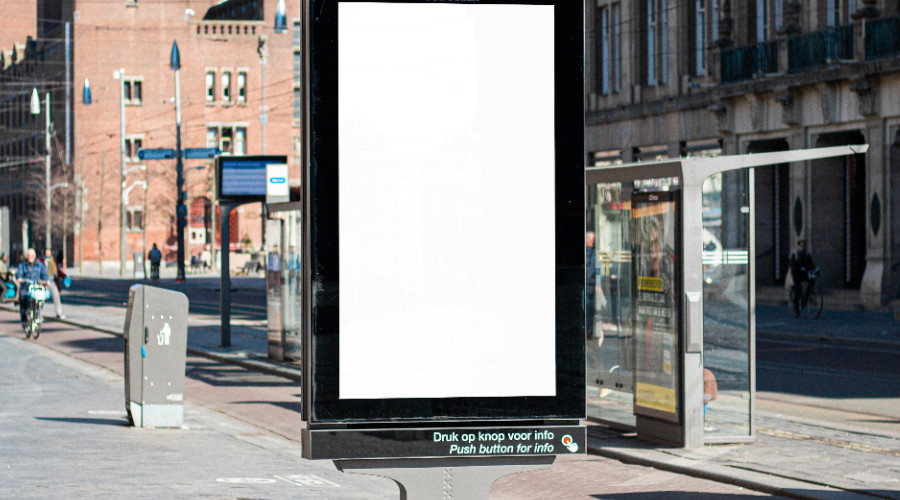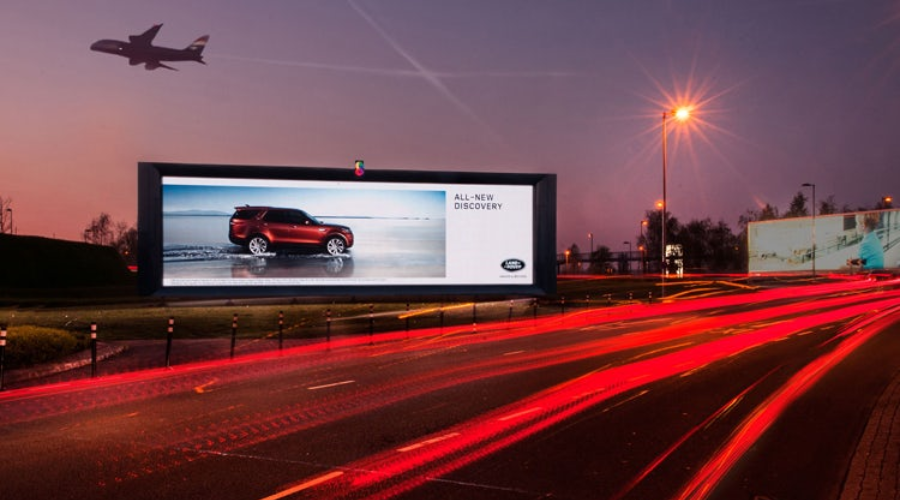Design is a crucial component in marketing. Well-designed marketing materials with eye-catching design can catch the attention of potential customers, build your brand identity, and engage customers effectively. Here are the key principles to consider when designing your marketing materials.
The importance of design in marketing
Every interaction a consumer has with your brand contributes to their overall impression of your business. That’s why design—encompassing everything from your logo to your website to your print materials—can make or break your marketing efforts.
Effective design can significantly improve engagement, drive conversions, and boost revenues. A report from Adobe titled “The Impact of Design on Business” found that companies that value design outperformed companies that do not by 219% over a decade. Therefore, investing in design is not merely an aesthetic decision—it’s a business one.
The basics of eye-catching design
There are several fundamental principles of design that serve as the building blocks of any successful marketing material. These principles, when applied effectively, can greatly increase the visual appeal and effectiveness of your campaigns.
Principles like balance (the distribution of visual weight in a design), contrast (the juxtaposition of different elements), emphasis (making one area of a design stand out), and rhythm (the repetition of elements) all play a part in creating engaging and visually appealing designs.
For instance, Apple’s minimalist aesthetic often features a balance of elements and a strong contrast between the product and the background, making the product stand out.
Color theory and its application in marketing design
Color can make a significant impact on a viewer’s perception and interpretation of a brand. Understanding and applying color theory in marketing design is therefore crucial for communicating your desired message and eliciting specific emotions from your audience.
Color theory is a framework that informs the use of color in art and design, aiming to create visual harmony and convey meaning. It is rooted in the color wheel, which is divided into primary colors (red, yellow, blue), secondary colors (green, orange, purple), and tertiary colors (mixes of primary and secondary colors).
Warm and cool colors
Colors are often grouped into warm (reds, yellows, oranges) and cool (blues, greens, purples) categories. Warm colors tend to evoke emotions ranging from feelings of warmth and comfort to feelings of anger and hostility. On the other hand, cool colors are often described as calming but can also call to mind feelings of sadness or indifference.
Color psychology in branding and marketing
Different colors can evoke different psychological responses. Let’s learn the role of different colors in eye-catching design.
For example:
Red is often associated with passion, excitement, and urgency, making it popular for clearance sales.
Blue symbolizes trust and stability, which are often used by financial institutions like banks.
Green is linked to nature and tranquility and is also associated with growth and health.
Yellow symbolizes happiness and optimism but can also signal caution.
The exact emotional responses can vary depending on culture, personal experiences, and context, so it’s crucial to know your audience.
Color combinations and schemes
Colors can be combined in various ways, guided by the color wheel:
Complementary colors are opposite each other on the color wheel (e.g., blue and orange). They create high contrast and are great for highlighting specific content.
Analogous colors are next to each other (e.g., yellow, yellow-green, and green), providing a harmonious look.
Monochromatic schemes use variations in lightness and saturation of a single color, offering a more subtle, elegant look.
Each color scheme can set a different mood and should be chosen based on the brand’s message and target audience.
Consistency and identity
Keeping a consistent color palette helps reinforce your brand identity across all marketing materials. This consistency makes your brand more recognizable and memorable. For example, Starbucks is closely associated with its distinctive green color, which symbolizes growth, freshness, and sustainability—values closely aligned with their brand.
To sum up, understanding color theory is a powerful tool in marketing design. By carefully choosing and combining colors, you can guide your audience’s emotional response and effectively convey your brand’s message.
Typography and its role in marketing design
Typography is a fundamental element of any design. It’s not just about making text legible—it’s about using typefaces strategically to set a mood, evoke emotions, and convey a message that resonates with your audience.
Understanding typography
Typography is the art of arranging a type to make it legible, readable, and visually appealing to the reader. It involves selecting typefaces, font sizes, line lengths, line-spacing (leading), letter-spacing (tracking), and adjusting the space within letter pairs (kerning).
The importance of typefaces
Typefaces significantly contribute to the viewer’s perception of a brand or a piece of content. Serif fonts (like Times New Roman), characterized by small lines or strokes attached to larger lines or strokes, tend to project a traditional, professional, or scholarly image. On the other hand, sans serif fonts (like Arial), without these embellishments, typically come across as modern, clean, and minimalist.
For instance, luxury brands like Tiffany & Co. often use serif typefaces to convey a sense of elegance and sophistication, while tech companies like Google and Facebook opt for simple sans serif fonts to reflect their modern and forward-thinking values.
Choosing and pairing fonts
The key to effective typography in marketing design is harmony and contrast. You want your fonts to complement each other without looking too similar. A common approach is to pair a serif font with a sans-serif font. This creates a clear contrast and hierarchy, allowing you to emphasize key points and make your content more digestible.
When choosing fonts, it’s also important to consider legibility, especially in smaller sizes or on different devices. Test your font choices in various contexts to ensure that they’re always easy to read.
Consistency and branding
Maintaining consistent typography across all your marketing materials helps establish a strong brand identity and makes your content more recognizable. A consistent typographic style, just like a consistent color palette, reinforces your brand personality and helps build trust with your audience.
For example, Coca-Cola’s iconic logo, written in the Spencerian script, is instantly recognizable and has remained consistent for over a century.
The impact of typography on user experience
Typography plays a key role in user experience. Good typography guides the reader’s eye across the page and makes the content more consumable and less overwhelming. Break up large blocks of text with headings, subheadings, bullet points, and quotes to facilitate readability.
In conclusion, typography is a powerful tool in marketing design. By understanding and skillfully applying the principles of typography, you can create designs that are not only visually appealing but also effectively communicate your brand’s message and values.
Effective use of images
In an increasingly visual world, images have become a cornerstone of effective marketing design. They can communicate complex messages quickly, evoke emotions, and significantly enhance the visual appeal of your materials.
Quality matters
The quality of the images you use in your marketing materials can reflect directly on your brand. High-resolution, professional-looking images project a sense of professionalism and credibility. On the other hand, low-quality or pixelated images can make your brand appear amateurish and unreliable.
Relevance is key
Images should be relevant to the content and should help convey your message. They should serve a purpose, whether it’s to illustrate a point, showcase a product, or set a mood. Irrelevant images can confuse the audience and detract from your message.
Using original images
Stock photos can be useful, but they’re not always the best option. Original, authentic images can make your brand stand out and show your brand’s unique personality. For example, if you’re a food business, professional photos of your actual dishes will be much more effective than generic stock photos.
Images and emotion
Images are powerful tools for evoking emotions. The right image can make your audience laugh, spark curiosity, or tug at their heartstrings. Emotional reactions can make your brand more memorable and help forge a deeper connection with your audience.
Consistency in style
Just like with color and typography, it’s important to maintain a consistent style with your images. This style could be related to the color palette, composition, subject matter, or editing style. A consistent image style helps reinforce your brand identity and makes your marketing materials more cohesive.
Use of infographics
When you need to present complex data or processes, infographics can be incredibly effective. They combine images with minimal text to explain, educate, and provide insights in an easily digestible format.
Balancing images with text
While images are important, they need to be balanced with the right amount of text. Too many images can be overwhelming and take away from the main message. Carefully consider the placement and size of your images to create a harmonious balance with your text.
Respecting copyrights
Always make sure to use images that you have the rights to. There are plenty of resources for free or paid images that can be used commercially. Always check the license and respect the work of photographers and designers.
In conclusion, effective use of images can significantly enhance the impact of your marketing materials. By carefully selecting and using images, you can create more engaging, visually appealing, and effective designs.
The power of visual hierarchy
Visual hierarchy is a powerful tool in design. It helps guide the viewer’s eye, prioritize information, and create a more enjoyable reading experience.
Visual hierarchy involves using design elements like size, color, contrast, and alignment to guide the viewer’s attention. For instance, the most important information is usually larger, bolder, or in a distinctive color. A classic example is a movie poster: the title is often the largest element, followed by the lead actors’ names and then the supporting details.
Consistency and brand identity
Brand consistency is the key to establishing a strong brand identity. Maintaining a consistent design across all marketing materials helps create a recognizable brand and builds trust with your audience.
Consistency in your marketing materials means more than just using the same logo. It extends to fonts, colors, image styles, tone of voice, and more. Coca-Cola, for instance, has maintained consistent branding for decades. Their distinctive red color, classic Spencerian script, and commitment to themes of happiness and sharing are instantly recognizable worldwide.
Understanding the target audience
The design does not exist in a vacuum—it must cater to the preferences and expectations of your target audience. Understanding who you’re designing for is a critical step in creating effective marketing materials.
Conducting audience research can help you understand your audience’s tastes and preferences. For example, younger audiences might appreciate bold, vibrant designs, while older audiences might prefer something more traditional and understated. Tailoring your design to your audience’s preferences can significantly improve engagement and conversions.
Importance of testing and iteration
Creating eye-catching designs for marketing materials isn’t a one-and-done process. It’s essential to test, iterate, and improve your designs based on feedback and performance.
A/B testing can be particularly useful in understanding what design elements work best for your audience. You might test different color schemes, images, or typography to see what generates the best response. As you gather data from your tests, you can continuously refine your designs to better suit your audience and achieve your marketing goals.
In conclusion, understanding and applying these key design principles can significantly enhance your marketing materials’ effectiveness. By focusing on basics like color theory, typography, visual hierarchy, and audience understanding, you can create designs that catch the eye, resonate with your audience, and reinforce your brand identity.
Incorporating motion into your design
The digital world is no longer static, and neither should your designs be. With the increasing prevalence of digital marketing, incorporating motion into your design can be a powerful way to attract and retain attention.
Motion can take many forms, from GIFs to animations to full-blown video content. When used properly, motion can tell a story, guide the user’s attention, and add a layer of interactivity to your marketing materials. Spotify, for example, often uses simple animations in its app and promotional materials to create engaging and dynamic user experiences.
Future of marketing design: augmented reality (AR) and virtual reality (VR)
As technology advances, so do the possibilities for marketing design. Emerging technologies like AR and VR are opening up new frontiers for immersive, interactive marketing experiences.
AR and VR can provide customers with unforgettable, immersive experiences that not only grab attention but also create deeper connections with your brand. Brands like IKEA and Sephora have already successfully integrated AR into their marketing, allowing customers to visualize furniture in their homes or try on makeup virtually. While these technologies might not be accessible to all businesses now, they’re a fascinating glimpse into the future of marketing design.
Conclusion
Creating eye-catching designs for marketing materials is a multifaceted process that involves understanding your audience, adhering to fundamental design principles, staying consistent with your brand identity, and keeping abreast of the latest trends and technologies. With careful attention to these factors, you can create marketing materials that don’t just catch the eye but also engage, inform, and inspire your audience. Keep iterating, keep testing, and, most importantly, keep your audience at the heart of all your design decisions.
If you found this blog helpful, make sure to check out this article – How to design eye-catching vendor display stands, for more in-depth information, with real examples about marketing your materials. In case you want more information about furniture placement, design, and advertisement, you might want to check our website for more blogs like this and future articles.











